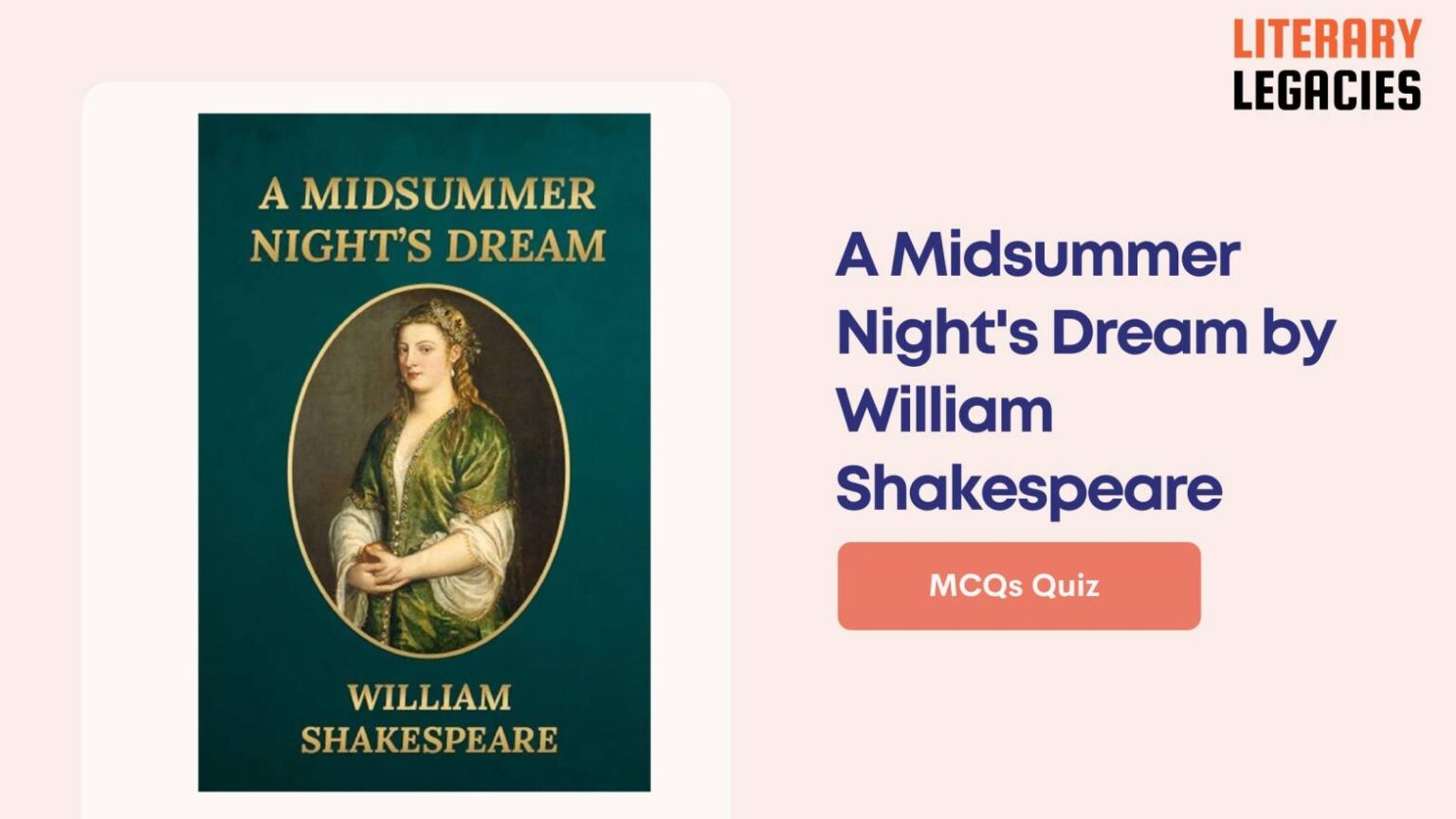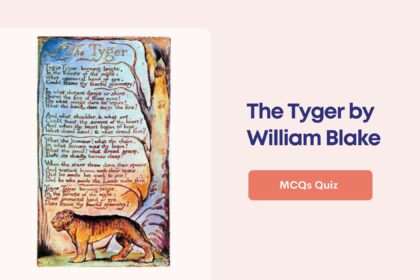1. What is the purpose of the magical flower in the story?
A. To make people fall asleep
B. To make people forget their past
C. To make people fall in love with the first thing they see
D. To grant eternal life
Answer: To make people fall in love with the first thing they see (C)
Puck uses the magical flower to make Titania fall in love with Bottom.
2. Why does Oberon want to use the magical flower on Titania?
A. To make her forget about the Indian boy
B. To exact revenge on her for disobeying him
C. To punish her for her cruelty
D. To make her fall in love with him
Answer: To exact revenge on her for disobeying him (B)
Oberon seeks revenge on Titania for disobeying him by refusing to give him the Indian boy.
3. Who does Lysander fall in love with after being afflicted with the love potion?
A. Helena
B. Titania
C. Demetrius
D. Hermia
Answer: Helena (A)
Puck mistakenly afflicts Lysander with the love potion, causing him to fall in love with Helena.
4. What happens to Bottom’s head in the story?
A. It is turned into a lion’s head
B. It is turned into a donkey’s head
C. It is turned into a fairy’s head
D. It remains unchanged
Answer: It is turned into a donkey’s head (B)
Puck transforms Bottom’s head into that of an ass as a prank.
5. Who performs a play for the lovers at the end of the story?
A. The Athenian craftsmen
B. The fairies
C. The lovers themselves
D. The King and Queen of Athens
Answer: The Athenian craftsmen (A)
Bottom and his fellow craftsmen perform a hilarious version of the story of Pyramus and Thisbe.
6. What happens to Demetrius at the end of the story?
A. He falls in love with Helena
B. He becomes indifferent to love
C. He remains in love with Hermia
D. He falls in love with Hermia
Answer: He falls in love with Helena (A)
Demetrius comes to love Helena by the end of the story.
7. What is the occasion that Theseus is preparing for?
A. His marriage to Hippolyta, queen of the Amazons
B. A grand ball for the Athenian nobility
C. A military campaign against the Amazons
D. His coronation as duke of Athens
Answer: His marriage to Hippolyta, queen of the Amazons (A)
Theseus is preparing for his marriage to Hippolyta with a four-day festival of pomp and entertainment.
8. What is the final result of Puck’s actions in the story?
A. Confusion and uncertainty
B. Chaos and destruction
C. Love and harmony among the characters
D. Disaster and tragedy
Answer: Love and harmony among the characters (C)
Puck’s mistakes are corrected, and the lovers end up with their rightful partners.
9. Why does Egeus bring Hermia to Theseus’s court?
A. To beg for Theseus’s help in finding a suitable husband for Hermia
B. To ask for the full penalty of law to fall on Hermia’s head if she disobeys him
C. To request permission for Hermia to marry Lysander
D. To complain about Lysander’s behavior towards Hermia
Answer: To ask for the full penalty of law to fall on Hermia’s head if she disobeys him (B)
Egeus wishes Hermia to marry Demetrius and asks for the full penalty of law to fall on Hermia’s head if she flouts her father’s will.
10. Who does Oberon want Puck to afflict with the love potion initially?
A. Lysander
B. Demetrius
C. The Indian boy
D. Titania
Answer: Demetrius (B)
Oberon orders Puck to afflict Demetrius with the love potion, but Puck mistakes Lysander for Demetrius.
11. What does Puck do to Demetrius and Lysander to resolve their conflict?
A. He puts them to sleep
B. He turns them into animals
C. He makes them fight each other
D. He confuses them by mimicking their voices
Answer: He confuses them by mimicking their voices (D)
Puck confuses Demetrius and Lysander by mimicking their voices, leading them to separate and become lost in the forest.
12. Where does Lysander plan to take Hermia to get married?
A. The palace of Theseus and Hippolyta
B. The woods outside Athens
C. The house of Lysander’s aunt, seven leagues distant from Athens
D. The temple of the Athenian gods
Answer: The house of Lysander’s aunt, seven leagues distant from Athens (C)
Hermia and Lysander plan to escape Athens the following night and marry in the house of Lysander’s aunt, some seven leagues distant from the city.
13. Why does Helena tell Demetrius about Hermia and Lysander’s escape plan?
A. To regain Demetrius’s love
B. To help Hermia and Lysander escape
C. To punish Demetrius for jilting her
D. To seek Demetrius’s help in stopping Hermia and Lysander
Answer: To regain Demetrius’s love (A)
Helena tells Demetrius of the elopement that Hermia and Lysander have planned, hoping to regain his love.
14. What is Puck’s final message to the audience?
A. Remember the play as a dream
B. Remember the play as a nightmare
C. Forget the play entirely
D. Take the play as reality
Answer: Remember the play as a dream (A)
Puck asks the audience to remember the play as though it had all been a dream.
15. What is the source of the conflict between Oberon and Titania?
A. A quarrel over a young Indian prince given to Titania
B. A disagreement over the marriage of Theseus and Hippolyta
C. A dispute over the governance of Athens
D. A rivalry between their respective fairy kingdoms
Answer: A quarrel over a young Indian prince given to Titania (A)
Oberon and Titania are at odds over a young Indian prince given to Titania by the prince’s mother.
16. What is the occupation of the second group of characters in the woods?
A. Fairy servants of Oberon and Titania
B. Indian princes and princesses
C. Athenian nobility
D. Athenian craftsmen rehearsing a play
Answer: Athenian craftsmen rehearsing a play (D)
The second is a band of Athenian craftsmen rehearsing a play that they hope to perform for the duke and his bride.
17. Who is the character that commissions Philostrate to find suitable amusements?
A. Demetrius
B. Egeus
C. Lysander
D. Theseus
Answer: Theseus (D)
Theseus, duke of Athens, commissions his Master of the Revels, Philostrate, to find suitable amusements for the occasion.
18. What is the punishment that Hermia faces if she disobeys her father’s wishes?
A. She will be disinherited
B. She will be forced to marry Demetrius
C. She will be banned from Athens
D. She will be sent to a convent or even executed
Answer: She will be sent to a convent or even executed (D)
Nonetheless, Hermia and Lysander plan to escape Athens the following night and marry in the house of Lysander’s aunt, some seven leagues distant from the city.
19. Who is the character that has recently returned from India?
A. Philostrate
B. Oberon
C. Titania
D. Helena
Answer: Titania (B)
The first is a band of fairies, including Oberon, the fairy king, and Titania, his queen, who has recently returned from India to bless the marriage of Theseus and Hippolyta.
20. What is the purpose of the four-day festival organized by Theseus?
A. To celebrate his marriage to Hippolyta, queen of the Amazons
B. To mourn the death of a close friend
C. To celebrate the arrival of the Amazons in Athens
D. To prepare for war against the Amazons
Answer: To celebrate his marriage to Hippolyta, queen of the Amazons (A)
Theseus, duke of Athens, is preparing for his marriage to Hippolyta, queen of the Amazons, with a four-day festival of pomp and entertainment.
21. What is the primary theme explored in A Midsummer Night’s Dream?
A. The power of magic
B. The importance of friendship
C. The struggle for social justice
D. The difficulty of love
Answer: The difficulty of love (D)
The play pokes fun at the torments and afflictions that those in love suffer.
22. What is the tone of A Midsummer Night’s Dream?
A. Serious and tragic
B. Somber and melancholic
C. Dark and ominous
D. Lighthearted and comedic
Answer: Lighthearted and comedic (D)
The tone allows the audience to enjoy the comedy without being caught up in the tension of an uncertain outcome.
23. What is the primary cause of the imbalance in the relationship between Titania and Oberon?
A. Titania’s love for the Indian boy
B. Oberon’s coveting of Titania’s Indian boy
C. Titania’s disagreements with Oberon over ruling the fairies
D. Oberon’s love for another fairy
Answer: Oberon’s coveting of Titania’s Indian boy (B)
Oberon’s coveting of the Indian boy outweighs his love for Titania.
24. What is the result of the lovers’ tangle resolving itself into symmetrical pairings?
A. A tragic ending
B. A traditional happy ending
C. A sense of disillusionment
D. A bitter conflict
Answer: A traditional happy ending (B)
The traditional happy ending is achieved when the lovers’ tangle resolves itself into symmetrical pairings.
25. What is the significance of the imbalance in the romantic relationships in the play?
A. It creates a sense of tragedy
B. It highlights the difficulties of love
C. It resolves the conflict quickly
D. It adds to the comedic tone
Answer: It highlights the difficulties of love (B)
The imbalance in romantic relationships highlights the difficulties of love.
26. Why does the play not explore the emotions of the characters in depth?
A. To emphasize the importance of social status
B. To poke fun at the torments and afflictions of love
C. To create a sense of detachment
D. To focus on the external conflicts
Answer: To poke fun at the torments and afflictions of love (B)
The play distances the audience from the emotions of the characters to poke fun at the torments and afflictions of love.
27. What is the central conflict in the relationships among the four young Athenians?
A. A struggle for power
B. A disparity or inequality in love
C. A difference in social status
D. A clash of personalities
Answer: A disparity or inequality in love (B)
The conflict arises from a numeric imbalance in which two men love the same woman, leaving one woman with too many suitors and one with too few.
28. What is a central element in creating the fantastic atmosphere in A Midsummer Night’s Dream?
A. The influence of dreams
B. The magical power of love
C. The mischievous nature of fairies
D. The theme of jealousy
Answer: The magical power of love (B)
Magic is used to create a surreal world and to embody the power of love.
29. What is the outcome of the imbalance in the relationship between Titania and Bottom?
A. A tragic consequence
B. A sense of resolution
C. A comedic situation
D. A bitter conflict
Answer: A comedic situation (C)
Titania’s passion for Bottom represents an imbalance of appearance and nature, leading to a comedic situation.
30. What is the theme that is linked to the bizarre, magical mishaps in the forest?
A. Jealousy
B. Dreams
C. Mischief
D. Love
Answer: Dreams (B)
The theme of dreaming is revisited when characters attempt to explain bizarre events.
31. What is the significance of the asymmetrical love among the four young Athenians?
A. It highlights the importance of social status
B. It exemplifies the difficulty of love
C. It emphasizes the power of magic
D. It creates a sense of detachment
Answer: It exemplifies the difficulty of love (B)
The asymmetrical love among the four young Athenians is a prime instance of love out of balance.
32. What is the primary association of mischief in A Midsummer Night’s Dream?
A. The Athenian youths
B. The fairy realm
C. The human realm
D. The craftsmen’s play
Answer: The fairy realm (B)
Mischief is primarily associated with the forest and the fairies who reside there.
33. What is the tone of the play’s exploration of the difficulty of love?
A. Lighthearted and comedic
B. Serious and tragic
C. Somber and melancholic
D. Dark and ominous
Answer: Lighthearted and comedic (A)
The play pokes fun at the torments and afflictions that those in love suffer, creating a lighthearted and comedic tone.
34. What is the outcome of the misuse of magic in the play?
A. It leads to a balance of love among the Athenian youths
B. It creates chaos
C. It leads to a rift between the fairy king and queen
D. It resolves the play’s tensions
Answer: It creates chaos (B)
The misuse of magic causes chaos, as when Puck mistakenly applies the love potion to Lysander’s eyelids.
35. What is the sense that Puck extends to the audience members at the end of the play?
A. The sense of reality
B. The sense of wonder
C. The sense of illusion
D. The sense of magic
Answer: The sense of illusion (C)
Puck extends the idea of dreams to the audience members, saying that, if they have been offended by the play, they should remember it as nothing more than a dream.
36. In which realms does the theme of jealousy operate?
A. In both the human and fairy realms
B. Only in the fairy realm
C. Neither in the human nor fairy realm
D. Only in the human realm
Answer: In both the human and fairy realms (A)
Jealousy operates in both the human and fairy realms in Midsummer Night’s Dream.
37. What is the occupation of the fairies in traditional British folklore?
A. Trickster fairies
B. Master craftsmen
C. Healers
D. Mischief makers
Answer: Mischief makers (D)
According to traditional British folklore, fairies are master mischief makers.
38. What is the outcome of Puck’s actions on the Athenian youths?
A. It leads to chaos and confusion
B. It makes them forget their past
C. It resolves their conflicts
D. It makes them fall in love with each other
Answer: It resolves their conflicts (C)
Puck’s actions ultimately resolve the play’s tensions by restoring love to balance among the quartet of Athenian youths.
39. What is the significance of Hippolyta’s first words in the play?
A. They introduce the theme of dreams
B. They introduce the theme of jealousy
C. They introduce the theme of mischief
D. They introduce the theme of love
Answer: They introduce the theme of dreams (A)
Hippolyta’s first words in the play evidence the prevalence of dreams.
40. What is the significance of the magical forest in the play?
A. It serves as a symbol of reality
B. It serves as a symbol of chaos
C. It serves as a symbol of dreams
D. It serves as a symbol of love
Answer: It serves as a symbol of dreams (C)
The magical forest serves as a symbol of dreams and the workings of magic.
41. What is Puck’s approach to mischief?
A. He only causes mischief when ordered by Oberon.
B. He is driven by a desire to restore order.
C. He only targets the Athenian lovers with his pranks.
D. He enjoys causing chaos and turning things on their head.
Answer: He enjoys causing chaos and turning things on their head. (D)
Puck’s declaration that ‘those things do best please me / That befall prepost’rously’ reveals his love of mischief and chaos.
42. What is the result of Puck’s mistakes in implementing Oberon’s plan?
A. They lead to the Athenian lovers falling in love with each other.
B. They help to resolve the conflict between Oberon and Titania.
C. They make Puck’s magic more powerful.
D. They cause chaos and have the most chaotic effects.
Answer: They cause chaos and have the most chaotic effects. (D)
Puck’s mistakes amplify the tensions that already existed among the Athenian lovers.
43. What is the significance of the transformations in the play?
A. They are a display of Puck’s magic for entertainment purposes.
B. They are only used to punish the Athenian lovers.
C. They ultimately help to restore order and achieve a happy ending.
D. They only serve to create conflict and fear.
Answer: They ultimately help to restore order and achieve a happy ending. (C)
The transformations contribute to the play’s humorous chaos and make its happy ending possible.
44. How does Hermia respond to Lysander’s sudden reversal of affection?
A. She is relieved and grateful for his new feelings.
B. She is angry and accuses him of lying.
C. She is confused and senses a failure of reason.
D. She is indifferent and ignores him.
Answer: She is confused and senses a failure of reason. (C)
Hermia is completely floored by Lysander’s sudden reversal of affection.



